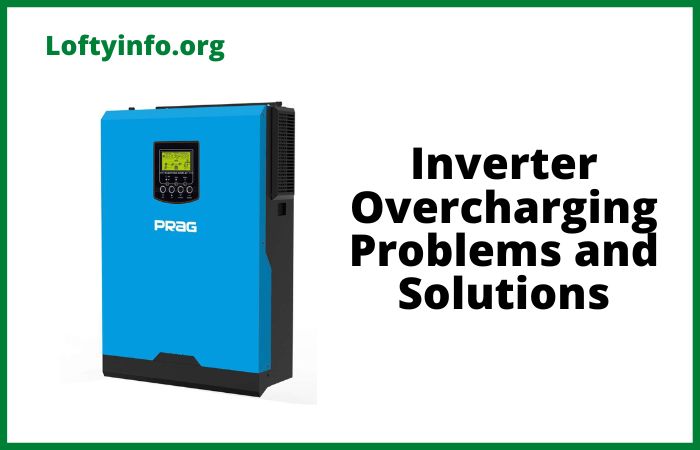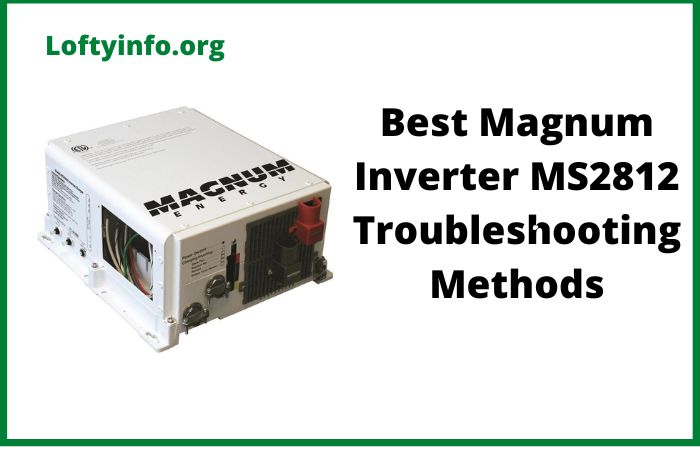Inverter Showing Low Battery But Not Charging: Causes And Solutions
Nothing frustrates homeowners more than watching their inverter display a low battery warning while refusing to charge.
This common problem can leave you without backup power when you need it most.
Understanding why your inverter shows low battery but not charging is essential for maintaining a reliable power backup system and avoiding costly emergency repairs.
Why Is Inverter Showing Low Battery But Not Charging
1) Faulty Battery Connections and Loose Terminals
The most frequent culprit behind charging failures is poor battery connectivity.
Over time, battery terminals accumulate corrosion from acid fumes and environmental exposure.
This white or greenish buildup creates resistance between the battery posts and cable clamps, effectively blocking the charging current from reaching the battery cells.
Loose terminal connections produce similar results even without visible corrosion.
When cables are not tightened properly against the battery posts, the connection becomes intermittent.
The inverter may detect the battery presence but cannot deliver adequate charging current through the weak connection point.
Vibrations from nearby appliances or general household movement can gradually loosen these connections over months of operation.
Cable damage also contributes to connection problems.
Cracks in the insulation expose copper conductors to moisture and oxidation.
Internal wire breakage from repeated bending or accidental crushing reduces the effective conductor cross-section.
These damaged sections create high-resistance zones that prevent proper current flow during the charging cycle.
Regular inspection of all battery connections should be part of your maintenance routine.
Clean terminals with a wire brush and baking soda solution to remove corrosion.
Ensure cable clamps are tightened to the manufacturer’s specifications using the appropriate tools. Replace any cables showing signs of damage or excessive wear.
2) Defective Battery Cells and Sulfation
Batteries deteriorate naturally through charge and discharge cycles.
Lead-acid batteries typically last between three to five years under normal operating conditions.
As batteries age, the internal plates undergo chemical changes that reduce their capacity to hold and accept charge.
Sulfation represents one of the primary aging mechanisms in lead-acid batteries.
During discharge, lead sulfate crystals form on the battery plates as part of the normal chemical reaction.
When batteries remain in a discharged state for extended periods, these crystals harden and become permanent.
Hardened sulfate crystals prevent the chemical reactions necessary for charging, causing the battery to reject incoming current despite showing low voltage.
Physical damage to battery cells can occur from overcharging, excessive heat exposure or manufacturing defects.
A single damaged cell in a multi-cell battery can prevent the entire unit from charging properly.
The inverter may detect this as a low battery condition but cannot force current into a compromised cell structure.
Deep discharge cycles accelerate battery degradation significantly.
When batteries are drained below their recommended depth of discharge repeatedly, the plate material deteriorates faster.
This shortened lifespan means batteries lose their ability to accept charge much earlier than their expected service life.
Testing individual battery cells with a hydrometer or digital battery analyzer can identify failed cells.
Batteries with one or more dead cells require complete replacement.
Attempting to charge severely sulfated batteries often proves unsuccessful and may damage the inverter’s charging circuit.
3) Malfunctioning Inverter Charging Circuit
The inverter’s internal charging circuitry can develop faults that prevent proper battery charging.
Power surges from unstable grid supply can damage sensitive electronic components within the charging module.
Capacitors, diodes and transistors that regulate charging current may fail partially or completely.
A defective charging circuit might allow the inverter to power connected loads from the battery but cannot reverse the process to recharge it.
The control board may incorrectly interpret sensor readings, leading it to believe the battery is fully charged when it actually requires charging.
This misdiagnosis keeps the charging circuit disabled despite the low battery indication.
Thermal stress contributes to charging circuit failures.
Inverters installed in poorly ventilated areas or direct sunlight accumulate excessive heat.
High temperatures degrade electronic components faster and can cause solder joints to crack.
These thermal issues often manifest as intermittent charging problems that worsen over time.
Firmware glitches in modern inverters with digital controls can disrupt charging algorithms.
Software bugs may cause the charging sequence to terminate prematurely or fail to initiate at all.
Some inverters require firmware updates to address known charging issues discovered after manufacturing.
Professional diagnosis with specialized equipment can pinpoint charging circuit faults.
Technicians measure voltage and current at various test points to isolate the defective component.
Repairing charging circuits often requires replacing entire circuit boards rather than individual components due to surface-mount technology used in modern inverters.
4) Incorrect Inverter Settings and Configuration
Many inverters feature adjustable charging parameters that must match the battery specifications.
Setting the wrong battery type in the inverter menu causes improper charging voltage and current delivery.
Tubular batteries require different charging profiles compared to flat plate or gel batteries.
Using incorrect settings can prevent charging or damage the battery through overcharging.
The charging voltage setting directly affects whether batteries receive adequate charge.
If programmed too low, the inverter never fully charges the batteries.
Settings too high can cause excessive gassing and water loss.
Most lead-acid batteries require bulk charging at approximately 14.4 volts followed by float charging around 13.8 volts.
Deviations from these values compromise charging effectiveness.
Current limiting settings also impact charging performance. Inverters limit charging current to protect both the battery and charging circuit from damage.
If this limit is set too low relative to battery capacity, charging becomes extremely slow.
A 150Ah battery bank charged at only 5 amps will take over 30 hours to fully charge from a depleted state.
Some inverters include battery temperature compensation features that adjust charging voltage based on ambient temperature. When this sensor fails or is incorrectly positioned, the inverter may apply inappropriate charging voltage for current conditions. Cold batteries require higher charging voltage while warm batteries need reduced voltage to prevent overcharging.
Review your inverter manual to verify all settings match your battery specifications.
Consult the battery manufacturer’s documentation for recommended charging parameters.
Many inverter manufacturers provide setup guides specific to different battery types to ensure optimal configuration.
5) Faulty Mains Supply and Input Power Issues
The inverter requires stable mains power to operate its charging circuit effectively.
Voltage fluctuations in grid supply can prevent proper charging even when mains power is available.
If input voltage falls below the inverter’s minimum operating threshold, the charging circuit shuts down to protect internal components.
Low voltage conditions are common in areas with inadequate electrical infrastructure or during peak demand periods.
When mains voltage drops to 160-180 volts instead of the standard 220-240 volts, many inverters cannot generate sufficient charging voltage.
The inverter may switch to battery mode repeatedly, never allowing adequate time for the charging cycle to complete.
Frequency variations in mains supply also affect charging performance.
Inverters expect grid frequency within a narrow range around 50 or 60 Hz depending on regional standards.
Significant frequency deviation can cause the inverter to reject mains input, treating it as unreliable power unsuitable for charging operations.
The neutral wire connection plays a crucial role in inverter charging.
A loose or broken neutral creates an incomplete circuit that prevents charging current flow.
This problem can be difficult to diagnose because the inverter may appear to recognize mains presence while being unable to utilize it for charging.
Undersized or damaged input wiring restricts current flow to the inverter.
Cables with inadequate cross-sectional area create voltage drops that reduce the effective supply voltage reaching the inverter.
Damaged insulation or internal conductor breakage produces similar effects.
Installing appropriate cable sizes according to inverter specifications and regularly inspecting wiring conditions ensures reliable power delivery.
6) Blown Fuses and Tripped Circuit Protection
Modern inverters incorporate multiple protection devices to safeguard against overcurrent conditions.
These fuses and circuit breakers can trip or blow during power surges, short circuits or overload situations.
Once activated, they remain open until manually reset or replaced, preventing charging current from reaching the batteries.
The charging circuit typically has dedicated fuse protection separate from the inverter output circuit.
This fuse may blow without affecting the inverter’s ability to discharge the battery and power loads.
Users often overlook this scenario because the inverter appears to function normally except for charging capability.
Battery fuses provide protection directly at the battery terminals.
These high-current fuses safeguard against dangerous short circuits that could cause battery explosions or fires.
A blown battery fuse completely isolates the battery from the inverter, preventing both charging and discharging.
Some inverter displays may still show battery presence due to residual voltage detection.
Thermal breakers respond to excessive heat buildup in the charging circuit.
These devices automatically disconnect the circuit when temperatures exceed safe limits.
Unlike standard fuses, thermal breakers often reset automatically after cooling.
Persistent thermal trips indicate underlying problems requiring professional attention.
Checking and replacing blown fuses is straightforward but requires caution.
Always disconnect mains power and battery connections before inspecting or replacing fuses.
Use only fuses with the correct current rating as specified by the manufacturer.
Installing higher-rated fuses to prevent repeated blowing can lead to equipment damage or safety hazards.
Conclusion
An inverter showing low battery but not charging stems from various causes ranging from simple connection issues to complex circuit failures.
Start troubleshooting with the most accessible components like battery terminals and fuses before investigating internal inverter problems.
Regular maintenance including terminal cleaning, water level checks and connection tightening prevents many charging issues from developing.
When basic troubleshooting does not restore charging functionality, professional diagnosis becomes necessary.
Qualified technicians possess the tools and expertise to safely test charging circuits and identify defective components.
Attempting complex repairs without proper knowledge risks personal injury and further equipment damage.
Investing in quality batteries and maintaining them according to manufacturer guidelines extends their service life and reduces charging problems.
Monitor your inverter regularly for warning signs like slow charging, unusual sounds or excessive heat.
Addressing minor issues promptly prevents them from escalating into complete charging failures that leave you without backup power during critical outages.
Exide inverter 850m VA overload problems
Best Solar Generator With Good Battery for Camping






